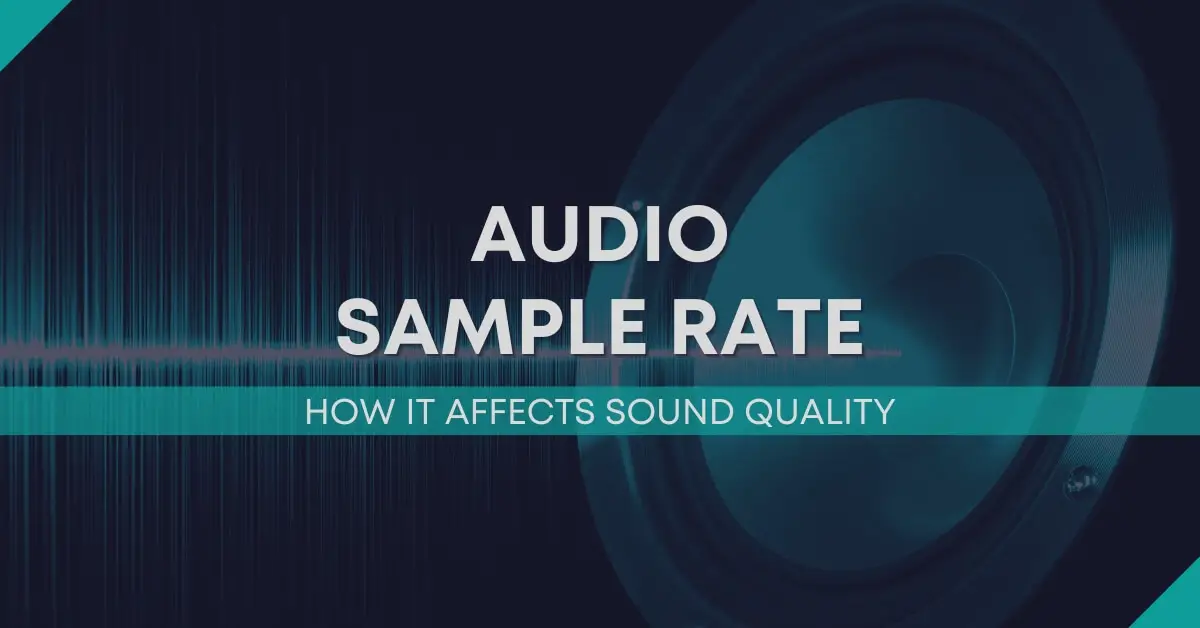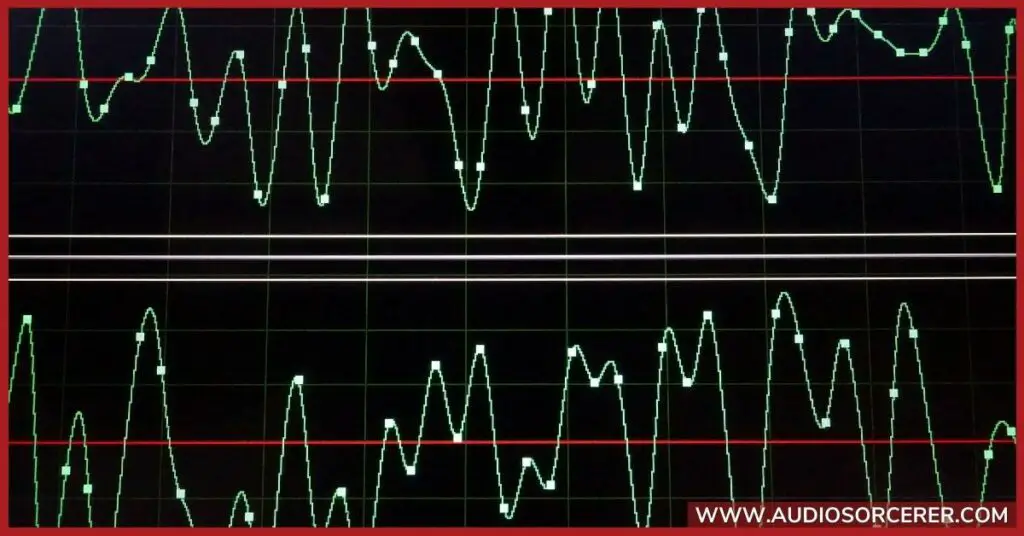
Audio quality isn't just about having the best speakers or the highest bitrate - it's also about understanding the science behind the sound. One key factor that can make a world of difference is the audio sample rate. You might have encountered this term if you've delved into the technical side of audio files or music production, but what does it truly mean? And more importantly, how does it impact the quality of the sound you hear?
In this blog post, we're going to break down and unravel the complexities of 'What is Audio Sample Rate'. We will discuss what it is, how it works, its impact on sound quality, file size considerations, and lastly which sample rate you should choose.
So, let's dive into the fascinating world of audio sample rates and discover how this lesser-known element can drastically transform your auditory experiences.

In digital audio recording, audio sample rate refers to the number of samples of audio carried per second. It represents how many times per second the analog audio signal is measured and converted into a digital format. The audio sample rate is measured in Hertz (Hz) and is often expressed as kilohertz (kHz).
A higher audio sample rate allows for a more accurate representation of the original sound wave. This means that a higher sample rate captures more data points of the audio signal, resulting in a more detailed and faithful reproduction of the sound.
The More You Know: Sample rate and bit depth go hand-in-hand in determining audio quality.
Related Article: What Is Bit Depth In Audio? How To Choose The Right One
As you've learned so far, audio sample rate represents the number of times per second that the analog audio signal is measured. It is directly related to the frequency response of the digital audio.
The Nyquist frequency, which is half the sample rate, defines the highest frequency that can be accurately represented in the digital signal. This means that in order to accurately capture and reproduce a certain frequency, the sample rate must be at least twice that frequency. For example, to accurately capture frequencies up to 20 kHz, a sample rate of at least 40 kHz is required.
A higher audio sample rate allows for better capturing and playback of high-frequency content, resulting in more detailed audio reproduction. However, it is important to note that the benefits of higher sample rates may not be perceptible to the average listener in all scenarios.

The audio sample rate has a significant impact on sound quality. Low sample rates can lead to aliasing, which causes distortion and artifacts in the audio. Aliasing occurs when frequencies higher than the Nyquist frequency are incorrectly represented in the digital audio.
Higher audio sample rates allow for more accurate representation of transient sounds and subtle details in the audio waveform. This means that high-frequency content and nuances in the audio can be captured and reproduced more faithfully. However, it is important to consider that the perceived sound quality is influenced by factors such as the listener's hearing ability, the quality of playback equipment, and the complexity of the audio content.
For those with trained ears and high-quality playback equipment, selecting a higher audio sample rate can result in a more immersive and realistic audio experience, particularly for high-resolution audio formats.
Audio sample rate directly impacts the size of a digital audio file. Higher sample rates result in larger file sizes, requiring more storage space and bandwidth for streaming.
When choosing an appropriate audio sample rate, it is important to consider the trade-off between audio quality and file size. For applications where storage space is limited or bandwidth is a concern, lower sample rates may be preferred.
Compression techniques such as lossy and lossless codecs can also help mitigate the storage requirements of high sample rate audio files.
While higher sample rates offer the potential for improved sound quality, there are some disadvantages to consider.
Not all audio playback devices and software support high sample rates.
Using higher sample rates may require specialized equipment and software, increasing the cost of audio production.
Working with higher sample rates can put additional strain on computer processing power and system resources.
They create larger audio files which take up more hard drive space.
The benefits of higher sample rates may be marginal or not perceptible to the average listener.
When choosing an appropriate audio sample rate, it is important to consider the intended purpose and target audience of the audio content.
For music distribution, 44.1 kHz is generally sufficient for most listeners and compatible with a wide range of devices. It is the standard sample rate for CD quality audio and offers a sufficient frequency response for most music recordings. It also offers a good balance between sound quality and file size.
If you are creating music or audio for film or YouTube, 48 kHz is your best option.
In audio production scenarios where capturing fine details and high-frequency content is crucial, higher sample rates like 96 kHz may be preferred. This is particularly relevant for professional audio production and high-resolution audio formats.
Other factors such as available storage space, computational resources, and compatibility with playback devices should also be taken into account when choosing a sample rate.
TIP: For standard music release, record audio at 48 kHz. When you export the audio for music distribution convert it down to 44.1 kHz and for film or YouTube leave it at 48 kHz. By recording at 48 kHz you are covering yourself for scenarios.
By now, you should have a deeper understanding of the phrase 'What is Audio Sample Rate' and the pivotal role it plays in determining the quality of audio. We've journeyed through the technical aspects, the use cases, and how to choose the right one, making it clear that a sample rate isn't just an obscure number—it's the backbone of the analog to digital conversion.
Remember, audio sample rate is only one piece of the larger audio quality puzzle, but it's a critical one that's often overlooked. In audio recording you need to choose the right one for your application and needs.
Keep exploring, keep learning, and keep listening. The world of audio is complex and beautiful, and every bit of knowledge brings you one step closer to perfecting your sound. Here's to unlocking the full potential of your audio experiences!
Sample rate plays a significant role in determining the quality of your audio. A higher sample rate means a more accurate representation of the original audio signal, resulting in better sound quality. However, it's important to remember that a higher sample rate also requires more storage space and more processing power.
The human ear can typically hear frequencies up to around 20 kHz. The sample rate should be at least twice the highest frequency one wants to record, according to the Nyquist-Shannon sampling theorem. A sample rate of 44.1 kHz, therefore, can capture frequencies up to 22.05 kHz, which covers the range of human hearing. While some claim to hear a difference with higher sample rates, it's generally accepted that for the average listener, a sample rate of 44.1 kHz is adequate.
Not necessarily. While a higher sample rate can offer a more accurate representation of the audio, the difference is often negligible to the human ear, especially above 44.1 kHz. However, there can be benefits in audio production to using higher sample rates, such as reducing aliasing in certain effects and processes. It's also important to consider your system's capability to handle higher sample rates.
The process for adjusting the sample rate can vary slightly depending on the DAW you are using, but the basic steps are often similar. Usually, you can find this setting in your DAW's 'Preferences' or 'Audio Settings'. Look for an option related to 'Sample Rate', 'Audio Quality', or 'Project Settings'. Once you locate this option, you can select your desired sample rate from the provided options. Remember to save your settings before closing. Note that excessively high sample rates may put more strain on your computer, so ensure your system can handle the full sampling rate that you select.
Spotify uses a sample rate of 44.1 kHz for their audio streams. This is the standard sample rate for most digital audio systems and is the same sample rate used for CDs. However, audio quality can also be affected by the bitrate Spotify uses for streaming. The bitrate varies depending on your subscription type (e.g., Free, Premium) and the device you're using.
"Some of the links within this article are affiliate links. These links are from various companies such as Amazon. This means if you click on any of these links and purchase the item or service, I will receive an affiliate commission. This is at no cost to you and the money gets invested back into Audio Sorcerer LLC."